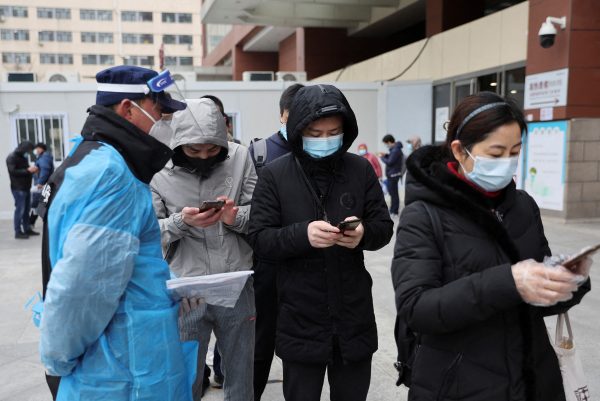In China, the use of digital health technologies has grown significantly following the pandemic. Medical consultations provided through Haodf.com — one of China’s largest internet health platforms — increased by 75 per cent between January and March 2020.
China’s experience with digital health is unique, as it preceded the pandemic and was achieved through deliberate efforts by the Chinese government to develop an internet health care ecosystem. New investment in China’s internet health market stood at 37.9 billion RMB (US$5.7 billion) in 2019 — up from 4.5 billion RMB (US$675 million) in 2013.
The internet health ecosystem was developed to address overcrowded public hospitals caused by the lack of a strong primary care system in China. It aims to bridge geographical disparities in access to highly skilled medical professionals, especially among rural and remote populations.
Another unique feature of China’s internet health ecosystem is the central role of technology platforms. Technology platforms act as third-party intermediaries, bringing together patients and physicians and framing how consumers and providers interact.
The growth in the industry leverages the capabilities of major internet enterprises — Alibaba, Tencent and JD.com — in e-commerce, logistics and communications. These platforms facilitate business-to-consumer interactions such as the provision of medical consultations, scheduling of hospital appointments, health management information and business-to-business transactions such as the sale of pharmaceutical drugs.
Internet health can significantly reshape consumer demand for health care. The alleviation of geographical barriers (distance and travel time) allows patients to seek care from high-quality providers located in other regions. But despite these options, patients often exhibit home-bias, preferring to visit a doctor from their own province — suggesting that the internet does not fully eliminate geographical barriers.
With information about prices of services and quality of providers more readily available, consumers can easily shop for higher quality and lower priced health providers. Difficulty in obtaining price information previously meant that consumers rarely shopped around and compared the costs of different providers. Price transparency can enhance competition — potentially leading to lower prices and higher quality of care.
While internet health offers much promise in solving the persistent problems plaguing China’s health care system, substantial challenges remain to be addressed.
Doctors who provide internet health care are usually full-time employees in Chinese public hospitals. They work in a ‘dual practice’ capacity as private contractors on internet health platforms, so there is growing concern that these doctors may devote more energy to their online practice at the expense of their public hospital responsibilities. Internet health offers doctors — especially junior ones — the opportunity to build a national reputation and develop their careers beyond what their public hospital positions can offer.
Public hospital doctors can use internet health work as a way to enhance efficiency in public hospitals by saving time on repetitive tasks and improving continuity of care through virtual follow-up appointments. But the current fee-for-service system for internet care can encourage overutilisation and increase inefficiency, as doctors’ income from internet care commensurates with the volume of care provided.
The cost of internet health care is primarily borne by households as an out-of-pocket expense, so there are affordability concerns, particularly among low-income households. Equity of access to public hospitals may worsen if private fee-paying consumers gain access to limited public hospital appointments via referrals through internet health platforms.
With the rapid expansion of virtual health technologies in China and globally, it remains to be seen how these technologies are to be used. With the aim of enhancing standardisation of care, the Chinese authorities have implemented provincial regulatory departments to improve the oversight of medical institutions that provide internet health. Medical institutions will also have dedicated departments to manage and monitor the quality and safety of internet health care and pharmaceutical services, as well as information technology and management systems.
Countries in South and Southeast Asia are going down the same path as China, with the emergence in recent years of online health care platforms such as DocOnline in India, Haldoc and Good Doctor in Indonesia and Doctor Raksa in Thailand. But it remains to be seen how digital health technologies can be harnessed effectively to address the challenges unique to their health systems.
Terence C Cheng is Research Scientist in the Department of Global Health and Population at the Harvard T.H. Chan School of Public Health.

